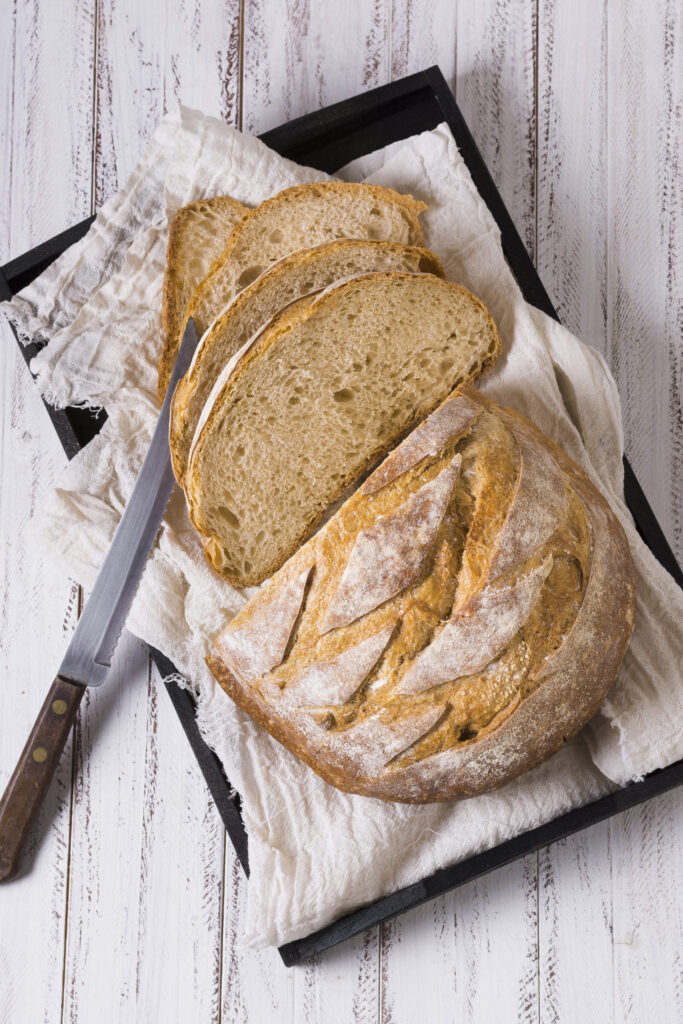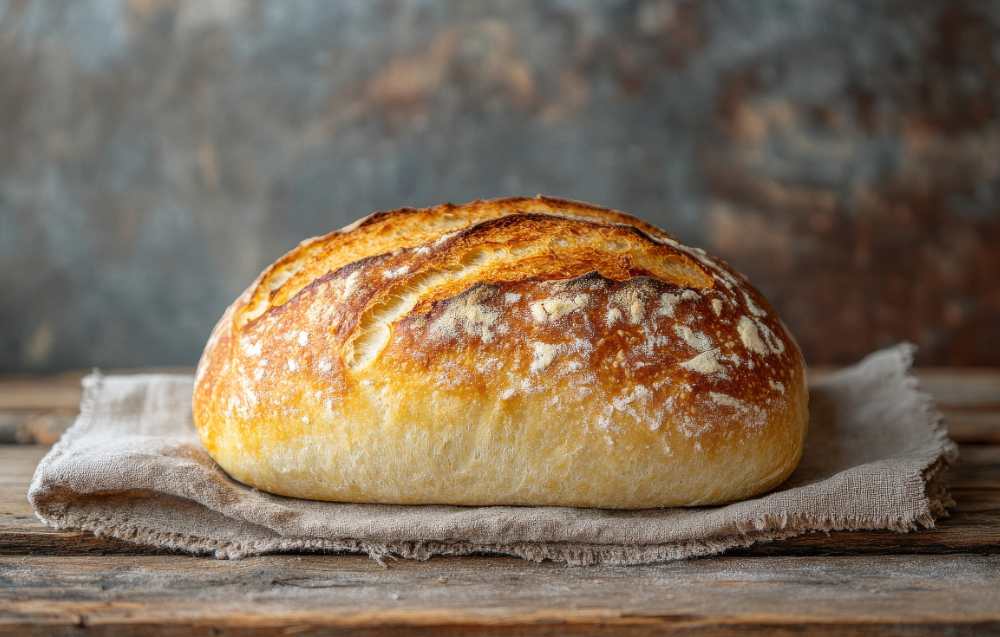Let’s clear up any confusion—artisan Italian bread and white bread are not the same thing. While they may share some foundational ingredients like flour, water, and yeast, that’s about where their similarities end. Artisan Italian bread is a product of tradition, skill, and time, crafted with care to produce unique flavors, textures, and aromas. Its rustic appearance, chewy crumb, and crisp crust are testaments to the art of bread-making. In contrast, white bread is mass-produced for convenience, often sacrificing flavor and nutrition for uniformity and shelf life. The journey from mixing to baking for artisan bread involves time-intensive processes like natural fermentation and hand-shaping, which elevate it beyond its humble ingredients. This article dives into the world of artisan Italian bread, exploring what sets it apart from standard white bread and why it holds a special place in the hearts of bread enthusiasts and food lovers alike.
H2: Understanding Artisan Italian Bread
H3: Definition of Artisan Bread
Artisan bread isn’t just a trendy label slapped onto any loaf. It’s a product of time-honored techniques, quality ingredients, and a craftsman’s touch. The word “artisan” implies a level of care and attention that mass-produced bread simply doesn’t get.
Think of artisan bread as the boutique coffee shop of the baking world. It’s handcrafted, baked in small batches, and usually free from preservatives and artificial additives. Each loaf tells a story of the baker’s skill, patience, and sometimes even the local environment, as natural fermentation processes can vary with the climate.

H3: Key Characteristics of Italian Bread
Italian bread, in particular, has its own flair. Picture a rustic loaf with a golden crust and a chewy interior, often with a slightly tangy taste thanks to long fermentation. Some popular varieties include ciabatta, focaccia, and pane toscano.
What makes Italian bread so special? It’s all about the balance of simplicity and sophistication. These breads typically use just a handful of ingredients, but the techniques involved—like folding, fermenting, and baking in stone ovens—turn them into something extraordinary.
Block Quote:
“Good bread is the most fundamentally satisfying of all foods; and good bread with fresh butter, the greatest of feasts.” — James Beard
H2: White Bread: An Overview
H3: What Defines White Bread?
White bread, on the other hand, is the staple you’ll find in most grocery stores. It’s soft, uniform, and mass-produced to suit the fast-paced lifestyle of today. Unlike artisan bread, it’s made using refined flour, which strips away the bran and germ of the wheat, leaving just the starchy endosperm.
This refinement gives white bread its trademark smooth texture and light color but also removes much of the fiber and nutrients found in whole grains. Additives and preservatives often come into play to extend its shelf life, making it a far cry from the natural simplicity of artisan Italian bread.
Looking for an in-depth guide to traditional Italian baking? Check out Artisan Italian Bread: Your Gateway to Authentic Baking to explore recipes and techniques.
H3: Common Ingredients in White Bread
The ingredient list for white bread is often much longer than that of artisan bread. While artisan bread sticks to basics like flour, water, yeast, and salt, white bread typically includes sugar, oil, and various chemical additives. Ingredients such as dough conditioners, emulsifiers, and preservatives are added to enhance its fluffy texture and prolong its shelf life. While these additions make white bread convenient and consistent, they come at the cost of authenticity and nutritional value. The result is a mass-produced product that prioritizes convenience over quality, lacking the depth of flavor and health benefits found in artisan alternatives.
H2: Comparing Artisan Italian Bread and White Bread
H3: Ingredients: Similarities and Differences
At their core, both types of bread rely on similar foundational ingredients. But the quality and type of those ingredients make all the difference. For example, artisan Italian bread often uses unrefined flours and avoids processed sugars.
White bread, by contrast, is a product of convenience. It’s designed to be cheap and easy to produce, often sacrificing flavor and nutrition in the process.
H3: Production Methods and Techniques
Here’s where the two truly diverge. Artisan bread-making is a labor of love, involving time-intensive processes like slow fermentation, hand-kneading, and careful baking. White bread, on the other hand, is typically churned out by machines in a matter of hours.
Imagine the difference between a slow-cooked stew and instant ramen. Both will fill your belly, but only one offers depth of flavor and a satisfying experience.
Curious about complementary dishes for bread-based meals? Explore Brisket Sandwich Recipes That Will Blow Your Mind to pair Italian bread with robust, smoky flavors.
H3: Nutritional Profile Comparison
When it comes to nutrition, artisan Italian bread usually takes the lead. Thanks to minimal processing and natural ingredients, it retains more fiber, vitamins, and minerals than white bread. Plus, the slow fermentation process can make artisan bread easier to digest.
Block Quote:
“Fermented foods like artisan bread offer unique health benefits, as they are often easier for our bodies to process and packed with gut-friendly nutrients.”
White bread, while soft and convenient, tends to spike blood sugar levels quickly due to its high glycemic index, making it less ideal for sustained energy.
Discover more about the cultural diversity of breads by visiting The Best Pasta for Mac and Cheese: Tini’s Guide to Perfection, where the art of Italian cuisine shines.
The Cultural Significance of Artisan Italian Bread
Italian Traditions and Bread-Making
In Italy, bread is far more than a staple food—it’s a symbol of tradition, culture, and community. For centuries, families and neighbors have gathered around communal ovens to bake loaves that represent their region’s unique identity. From the rustic simplicity of pane toscano to the fragrant focaccia of Liguria, each bread tells a story of local ingredients and age-old techniques. More than nourishment, bread serves as a bridge between generations, passed down as a cherished art form. The act of breaking bread together represents unity, making it an integral part of Italian life and a celebration of shared heritage.
The roots of artisan Italian bread lie deep in the fascinating history of bread, which showcases how bread evolved from ancient staples to modern artisan masterpieces. Understanding these historical contexts makes each bite even more meaningful.
Regional Variations of Italian Bread
Italy’s diversity shines through its bread. In Tuscany, pane toscano is crafted without salt, designed to complement the region’s salty dishes. Southern Italy offers ciabatta, with its airy texture and crisp crust, while focaccia from Liguria showcases toppings like rosemary, olives, or tomatoes.
These regional varieties illustrate the importance of local ingredients and techniques, which give each loaf its distinct flavor and character. By appreciating these traditions, we see how bread becomes more than sustenance—it’s a reflection of place and culture.
Common Misconceptions About Artisan Italian Bread
Is It Just a Fancy Term for White Bread?
Some might think artisan Italian bread is simply white bread dressed up in fancier packaging, but that couldn’t be further from the truth. While they share basic ingredients like flour and yeast, the production methods set them worlds apart. Artisan bread undergoes natural fermentation, which not only enhances flavor but also provides gut-friendly bacteria.
If you’re curious about how fermentation contributes to better health, check out the health benefits of fermentation. This process is key to the unique taste and digestibility of artisan Italian bread.
Myths About Health Benefits and Taste
A common misconception is that all artisan bread is inherently healthier. While it typically contains fewer preservatives and boasts more nutrients than white bread, the quality of ingredients plays a significant role. Not all artisan bread is created equal—some bakers use refined flours, which strip away important nutrients, or add sugar to enhance flavor, diminishing its health benefits. The key is to choose artisan bread made with whole, minimally processed ingredients and traditional methods. This ensures that you’re getting a loaf that not only tastes exceptional but also delivers on the promise of better nutrition and natural craftsmanship.
The secret lies in choosing high-quality ingredients that prioritize flavor and nutrition. When done right, artisan bread provides a well-balanced, wholesome eating experience.
The Most Common Problems with Artisan Italian Bread
Difficulty in Identifying Authentic Artisan Bread
Identifying genuine artisan bread can be challenging, especially with mass-produced loaves flooding the market. Authentic artisan bread is handmade, showcasing a rustic, imperfect appearance and a deep, blistered crust—a sign of natural fermentation and traditional baking methods. However, many store-bought options labeled as “artisan” are factory-produced, relying on additives and shortcuts to imitate the texture and appearance of real artisan bread. These imitations often lack the depth of flavor, texture, and nutritional value that come from time-honored techniques. To find true artisan bread, look for local bakeries that prioritize quality, traditional methods, and the use of simple, natural ingredients.
Mislabeling in Commercial Markets
The growing popularity of artisan bread has unfortunately led to widespread mislabeling. Many supermarkets capitalize on the term “artisan” to market loaves that fail to meet genuine artisan standards. These factory-produced breads often lack the craftsmanship, natural fermentation, and high-quality ingredients that define true artisan bread. As a result, consumers are frequently misled, purchasing bread that falls short of their expectations for taste, texture, and authenticity. This mislabeling not only diminishes the value of real artisan bread but also leaves buyers frustrated and uncertain about what they’re actually getting. Staying informed helps distinguish authentic products from mere imitators.
Issues with Homemade Artisan Bread
Baking artisan Italian bread at home can be a rewarding but challenging endeavor. Achieving the ideal balance of texture, flavor, and crust requires attention to detail and patience. Factors such as room temperature, proofing times, and oven settings all play crucial roles in the final result. A dough that proofs too long can collapse, while insufficient proofing may lead to dense bread. Oven temperatures must be precise to create a golden, crispy crust without overbaking the interior. Despite these challenges, with practice and the right techniques, home bakers can create delicious, authentic artisan Italian bread that rivals their favorite bakery loaves. So, -Is Artisan Italian Bread Just White Bread?- Absolutely not—each loaf is a testament to the art of traditional baking.
Why Artisan Italian Bread Stands Out
Texture, Flavor, and Craftsmanship
Artisan Italian bread is a feast for the senses. The crust is perfectly crispy, often with blistered marks from a stone oven. When you tear it open, the inside reveals a soft, airy crumb that’s chewy yet tender.
The flavor is where artisan Italian bread truly shines. Thanks to long fermentation times, the bread develops a depth of flavor that’s tangy, nutty, and slightly sweet. It’s like the difference between a homemade marinara sauce that’s simmered all day and a jar of generic store-bought sauce—both will do the job, but one elevates the experience.
The craftsmanship behind artisan bread is another standout feature. Each loaf is shaped by hand, giving it a rustic, imperfect beauty. This personal touch, combined with time-tested techniques, makes every bite feel like a small piece of art.
The Role of Tradition in Bread-Making
Italy’s bread-making traditions are steeped in history, and artisan Italian bread reflects this heritage. Techniques like natural leavening and wood-fired baking have been passed down for centuries. These methods aren’t just about making bread—they’re about preserving culture.
When you eat artisan Italian bread, you’re not just enjoying a delicious treat. You’re participating in a tradition that connects generations of bakers and eaters. It’s a tangible reminder of how food can be a bridge between the past and the present.
Final Thoughts: Is Artisan Italian Bread Just White Bread?
The Distinctive Qualities of Artisan Italian Bread
After exploring all the layers, it’s clear that artisan Italian bread is much more than just white bread. While they might share some similarities in ingredients, they diverge wildly in terms of production, flavor, and cultural significance.
Artisan Italian bread represents a commitment to quality, tradition, and craftsmanship. It’s not made to be mass-produced or to sit on a grocery store shelf for weeks. Instead, it’s a fresh, flavorful experience meant to be savored.
White bread, in contrast, prioritizes convenience and uniformity. While it has its place in the culinary world, it simply can’t match the complexity and authenticity of artisan bread.
Block Quote:
“Artisan Italian bread is more than food—it’s an experience. It invites you to slow down, savor the moment, and connect with the traditions that shaped it.”
Embracing Bread Diversity in Culinary Culture
At the end of the day, there’s room at the table for all kinds of bread. Whether you’re a fan of fluffy white slices or crusty artisan loaves, what matters most is how bread enriches your life.
However, understanding the difference between artisan Italian bread and white bread allows you to appreciate the artistry and effort behind each loaf. So, the next time you reach for bread, consider choosing one that tells a story—a story of tradition, passion, and craftsmanship.

